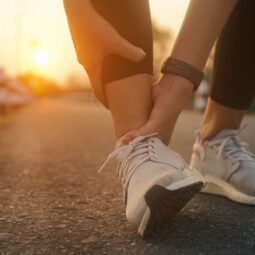
Like other foods that have had their moment in the bad-guy spotlight, salt — aka sodium chloride — isn’t all bad. Sodium is an essential nutrient, according to the American Heart Association (AHA). Your body needs it to control your fluid balance and blood pressure and to help your muscles and nerves work right. But things can go from good to bad when we get too much of it — and most of us do. High sodium intake leads to high blood pressure, a key contributor to heart disease. For better health, you don’t have to eliminate all sodium. Just aim lower.
The sweet spot for salt
The AHA recommends an ideal limit of 1,500 mg of sodium per day for most adults,* and an upper limit of 2,300 mg — about a teaspoon. Most of us get closer to 3,400 mg, or 1-1/2 teaspoons. Trimming just 1,100 mg a day, or half a teaspoon, can make a big difference to your blood pressure and your heart.
Where you can cut back a pinch
In restaurants: More than 70% of our sodium comes from the prepared and packaged foods we get in restaurants and stores. Try to dine out only once a week, and when you do:
- Choose places with made-to-order foods where you can ask for no salt.
- Stick to grilled, roasted or baked entrees, and avoid salty sauces.
- Eat only part of the entree and add a veggie or salad, dressing on the side.
At the grocery store:
- Buy more fresh, whole foods.
- Go easy on salty suspects: canned foods, soups, frozen entrees, deli and cured meats, chips and crackers.
- Check the sodium on every label — you might be surprised. Bread, for example, is a top source of sodium.
- Avoid products that list more than 200 mg of sodium per serving.
At home: Only about 11% of our sodium comes from the salt we add in the kitchen and at the table — a great reason to cook more often at home.
- Use high-flavor ingredients: lemon, garlic, caramelized onions, herbs.
- Skip the salt in recipes. You’ll taste it more on top of your food than in it.
- Cut back to 1/4 teaspoon of table salt per day. Measure it into a little bowl and take a pinch if needed.
- Try a new salt-free seasoning blend.
Salt is an acquired taste, and it can be “un-acquired,” too. After 6-8 weeks of lower-salt eating, you may find that you can’t eat chips anymore — they’re just too salty. Relish the moment, and pat yourself on the back.
*If you have a medical condition or special dietary needs, follow your health care provider’s advice. If you are an athlete, your sodium needs may be higher — talk to your trainer.


